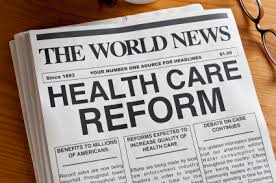Recently I read an article in a trade publication that addressed the so called “silver tsunami”, related to long term care. While the word “tsunami” certainly got my attention, some of the statistics mentioned in the piece had me downright concerned. As an employee benefits consultant/broker, health insurance is almost always at the top of the list in terms of importance and cost, followed by dental, life insurance, disability income, vision, and tax preferred spending accounts (e.g., health savings accounts, flexible spending accounts, health reimbursement arrangements). However, with 10,000 Americans turning 65, each and every day, and the propensity to need some form of assisted care in the future as we age, LONG TERM CARE INSURANCE (LTCI) deserves a “seat at the table”. Here are some important considerations relative to long term care, which includes facility care at various levels, and potentially care received in the comfort of one’s own home…
Based on insurance company – Northwestern Mutual Life Insurance Company’s 2014 Long Term Care Study:
- Currently 1 in 3 Americans provides or is expected to provide care for a loved one.
- The largest share of caregivers is in their peak earning years of age (45-64).
- 47% of working caregivers reduce or deplete personal savings to cover expenses related to care giving.
- 80% of primary and 50% of secondary caregivers reduced retirement plan contributions to cover long term care related expenses.
- 75% of Americans agree that as people live longer, the need for long term care is greater.
- By the year 2020, it is estimated that 25% of the workforce will be 55 years of age or older.
- Someone turning 65 years of age today has a nearly 70% chance of needing some form of long term care services/support in their remaining lifetime.
- The maximum benefit period (usually expressed in a number of years, or in some cases, for life).
- The per day or per month benefit amount.
- The total amount of benefits available or the lifetime maximum benefit (generally determined by multiplying the per day benefit amount (no. 2.above) by 365, then multiplying this figure by the number of years associated with the maximum benefit period (no. 1. above).
- The length of time before benefits are payable (referred to as the benefit waiting period).
- Whether or not the policy provides coverage for care provided in and out of a nursing home, assisted living facility, and/or the person’s home.
- Whether or not the policy only provides benefits for licensed care givers. Some policies provide benefits to care givers that are not necessarily licensed providers, but rather, friends, neighbors, and relatives.
- Inflation protection.
- Partial or full return of premium in the event benefits are never triggered.
- Whether or not the policy can continue with limited benefits if the policy owner decides to stop paying premiums (generally referred to as a non-forfeiture option).
- Whether the policy pays benefits based on an expense incurred, indemnity, or disability model.
- Whether the policy is considered qualified or non-qualified. (Note: in order to be eligible for tax deductability of premiums, the policy must be qualified.).
- Inability to perform a specific number of “activities of daily living”, or ADL’s, which may include bathing, continence, dressing, eating, toileting, and transferring; or
- Cognitive impairment (e.g., dementia, Alzheimer’s disease).








